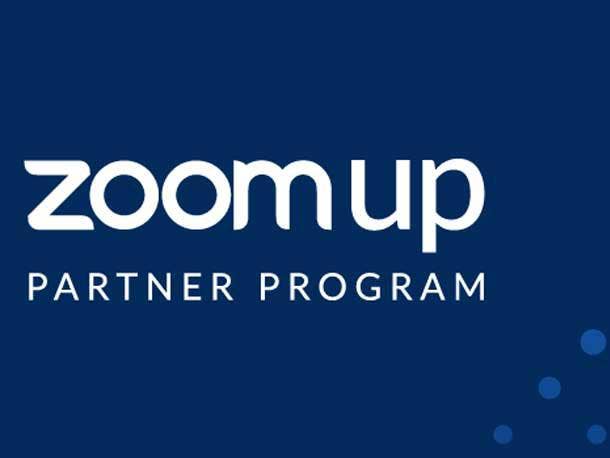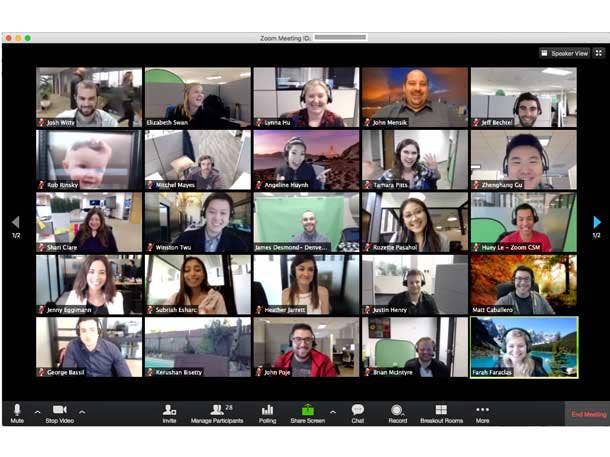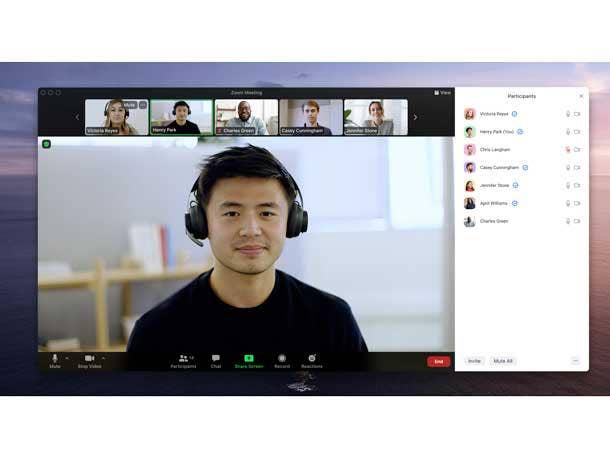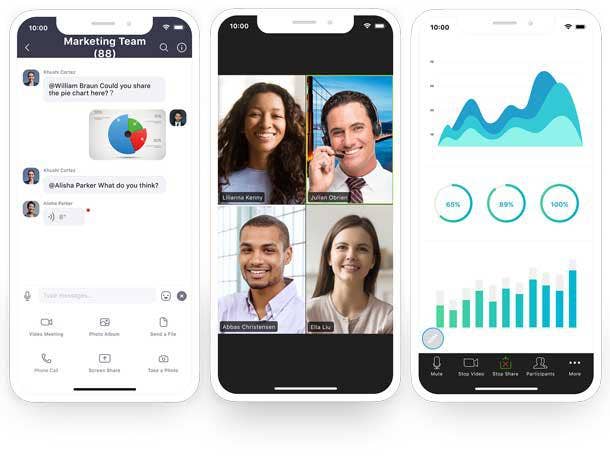New Zoom Channel Chief On Hybrid Work, Profitability, And Building a ‘Partner-Centric Culture’
‘[We’re] fostering that partner-centric culture. This is a journey; you’re going to go up and down on this. I’ve run both sales and I’ve run channels and I’ve had both together, and this is the journey you go on,’ Zoom’s new channel chief, Todd Surdey, tells CRN.

Zooming In
Zoom Video Communications’ new channel chief, Todd Surdey, who has been at the helm since July, is excited to be here. In fact, Surdey “targeted” Zoom as the next company he wanted to work for, he said.
As hybrid work has changed the collaboration game, it’s now more important than ever for businesses to have the right tools in place for their employees to work together from anywhere since the trend isn’t going away. That means new offerings that go above and beyond simply videoconferencing. It’s an exciting, fluid and fast-moving space, and Surdey believes that Zoom will only win with the help of channel partners.
Zoom is still relatively new to the channel, having launched its program about four years ago and announcing a revamped channel program—Zoom Up—in May. The company just two years ago was doing about 10 percent of its business through the channel, which climbed to 30 percent in about a 12-month period. But Surdey has even loftier goals for Zoom’s channel: He wants to get partners to contribute to more than 50 percent of the videoconferencing giant’s revenue.
It won’t come without some changes, but the longtime sales executive is confident in his plan that lays out how Zoom and its internal teams will enable partners with new access to resources and collaborate with them to invest in the solutions they are bundling today for their customers.
His message to the channel? There’s a great opportunity for both sides to capitalize on what Zoom offers and what the company and partners can offer together.
Surdey sat down with CRN ahead of Zoomtopia 2022 this week to talk about how the channel is already contributing to the company’s impressive growth and his plans for future success.
Here are excerpts from the conversation.

How are channel partners contributing to Zoom’s growth today?
The contribution that we get from the channel is roughly 30 percent. And that’s about a 50 percent increase from last year at this time, so really unbelievable for our channel. And if you double-click into that, Zoom Phone is one of the unbelievable things that has lit up within our channel, which is just over 32 percent [of sales generated by partners].
If you look internally, we’re at roughly $4.5 billion today. How do we grow to that $10 billion? We are looking for [channel business] to be north of a 50 percent contribution. And contribution for me is in the form of two things: increasing productivity—so how do we look at the opportunities and work together on things where we’re colliding with some of these partners—and are we increasing the productivity of their services, their relationships? And things like that. The second part of that is really going to come from incremental. We want to get to this next chapter, and we will be looking [to be] channel-first. We may pick countries, we may pick segments, we may pick verticals, but we want to lean in and work with our partners [in a] partner-first type of model. And this will internally grow as we move into this hybrid world. Our ability now to become more sticky with our partners and what they do and the value that they bring is unbelievable.

How specifically do you plan on getting to 50 percent of business through the channel?
As we go into the next chapter, partner centricity is massive for us, and I define that in about four different ways. One is really about this continued momentum about ease of doing business with and around us. There are some things there that we’ve spent a lot of time on. We just formally launched Zoom Up [its channel program], and that will have a big impact on [ease of doing business].
The second big thing will be about partner profitability and value exchange. This has been a massive one because for me, the future is about obviously impacting revenue and the contribution the channel makes, but it’s so critical that we actually do this in harmony with our partners, and how and what things are they building and investing in, and what we can do, at some level, with some equal investments. [This will] ultimately help them really exploit those amazing things that they’re doing in services [and] solutions that they’re building—managed services, integration services—all the things that will become really, really important. We have been making that much easier.
The third thing is really about building and fostering the partner-centric culture within Zoom. The channel is interesting. The channel is only [four] years young, and the developments and the things that they have done prior to coming here are off the charts. The goal here is really to bring this together with our sales team. [It’s] about accelerating together with partners and in the field with our customers. So delivering very impactful solutions. And we know that by doing this together, it takes us up a whole other level. I am incredibly aligned and thankful for my partnerships with the heads of sales that are in North America and the person that runs all international, so we’ve got massive momentum there.
The fourth thing for me will be around enablement, and it sounds like a simple thing. How do we bring [partners], for example, into the bootcamps were we train all our salespeople? We want to give them the same quality and level of training. For the top end of partners, I’m calling them semi-customized enablement and training programs for those sets of partners where we want to even invest in more. It will be around [giving] them access or ability to sell all of our products. We want to make sure that one, we have a sales campaign around enablement and two, that we continue on what we’re developing and delivering today, across all those products, and that we have a much higher level of communication, especially when you go into the services and solutions that these partners can and do offer that we need to do. And that’s a two-way movement. We want to take the services that [partners] are building, or that they’ve developed, and train our sales teams so that they can go in and say: ‘Holy cow, not only do I have a partner that’s here that may have a relationship [with the customers], but this partner has the specific offerings that really can help us change the game across our platform and maybe even give us a massive differentiator when we’re going and working with these customers.’

Zoom CEO Eric Yuan
Why is now the time for Zoom to go big with the channel?
I think there [are] a number of reasons. If you think about pre-pandemic days, we were all largely working from offices. Then, the world shifted overnight to basically everybody working from home. That’s where things just lit up for Zoom in a massive way. During that journey, what was so amazing with what Eric [Yuan, Zoom’s CEO] did, and what our product team did, was they were already building for the future. And that future is a hybrid world, which arguably you could say is even more complex than what we went through during the pandemic. The hybrid world is a world of you may or may not go into the office. Some companies have decreased their spaces. So how you give them an incredible experience wherever they are is incredibly important. How do I increase productivity but in an environment that helps us in this new world? Zoom represents that. It’s the level of what things can we do around expansion of [hybrid work,] whether that be with our resellers or VARs, with services that they’re going to offer [and] that they do offer, when you start to look across the platform—Context Center, Zoom Phone, Zoom IQ—we’ve got the ability with collaboration tools that really accelerate that [and puts] choice and opportunity in the hands of these employees and customers.
There are a lot of companies out there and Zoom, because of where we’re at and the number of customers we have and the trust factor we have, that’s huge for us. The partners get that, and they see it, and it’s a great opportunity for them to expand on that because it’s easy to do and it plays straight into them being able to build their relationships and their partnerships with these customers as well.

How are you incentivizing internal sales teams to work with the channel?
First off, we’ve always had it this way and we’re going to continue it into the future—there are no differences from a comp[ensation] perspective. When we work with channel, it’s comp-neutral. That’s the big thing when you run sales work, you’ve got to do more than check the box there. You got to be super careful, right? We’re not setting up the channel to be competitive at all. Internally, it’s going to be complementary—[direct and indirect] are going to coexist in a great way and we’re going down that path.
The second big thing is we’re going to be working on ease of doing business internally. How do you actually look at the opportunities as they come in? How do we work holistically with partners? How do we put the right types of organization in place that can help not only facilitate the building and the development and the communications with these partners, but how do we bring in the, for lack of a better term, the partner execution model of when we get into these opportunities we work together. And we want to white-glove that with and for our partners, but also for our sales teams. This is a new step for some of these folks, so you just don’t want to assume that it’s easy. There are many partners out there, there are some partners that are trying to get access, and we want to provide a much easier path for our sales teams internally.
The third thing is enablement. It’s really going to be important that we’re educating and enabling our sales teams and our management teams so they understand. That last element will come really across with us enabling and working with the teams internally to make sure [we’re] fostering that partner-centric culture. This is a journey; you’re going to go up and down on this. I’ve run both sales and I’ve run channels and I’ve had both together, and this is the journey you go on. And it’s just patience and working with folks.

Test123
How will you and your team encourage partners to create bundled solutions around Zoom products?
First, the opportunity with Zoom Up is to entice and delight any and all partners that want to be a part of it, and a big part of that will be the journey that they want to go on. We want them to feel like they’re part of something special, that they have the level of control or enablement that they need.
The second big thing for us will be how do we look at investments in terms of our top partners who we’re going to look to invest and work with them on the offerings that they have, or that they’re continuing to build. I have, inside of the channel team, an organization that [includes] basically specialists on Zoom Phone,[or] on Zoom Contact Center, etc. and this team will actually work with those folks. So these will likely be some of our top partners, but it doesn’t mean that we won’t get into the middle depending on the offering or the customer or the solution. But I have a whole team that will actually work with them to support them. In parallel to that I have a presales team that is within channels, and that presales team will actually additionally support these folks as we worked through this. So there’s still the certifications they can get access to, but all of it really will come off the back of Zoom Up, and Zoom Up for us will continue to be better, will continue to take the feedback from our partners and from our customers and how we can actually make sure when they’re looking for a partner, or they’re trying to work with a partner, how do they know that they have the certifications? So, we’ll look at those teams.
We also launched this last quarter a professional resource type of model where we picked up a group of partners as a testbed to say: ‘What if we were to invest in a resource and put them to where they’re your employee and they can help you build or do things with Zoom?’ So we’re going to test that out and see how it works. That’ll run throughout into next year, and then we’ll kind of either do a reset or we’ll look at how and where do we really focus those resources as we get further or deeper into our FY 2024.